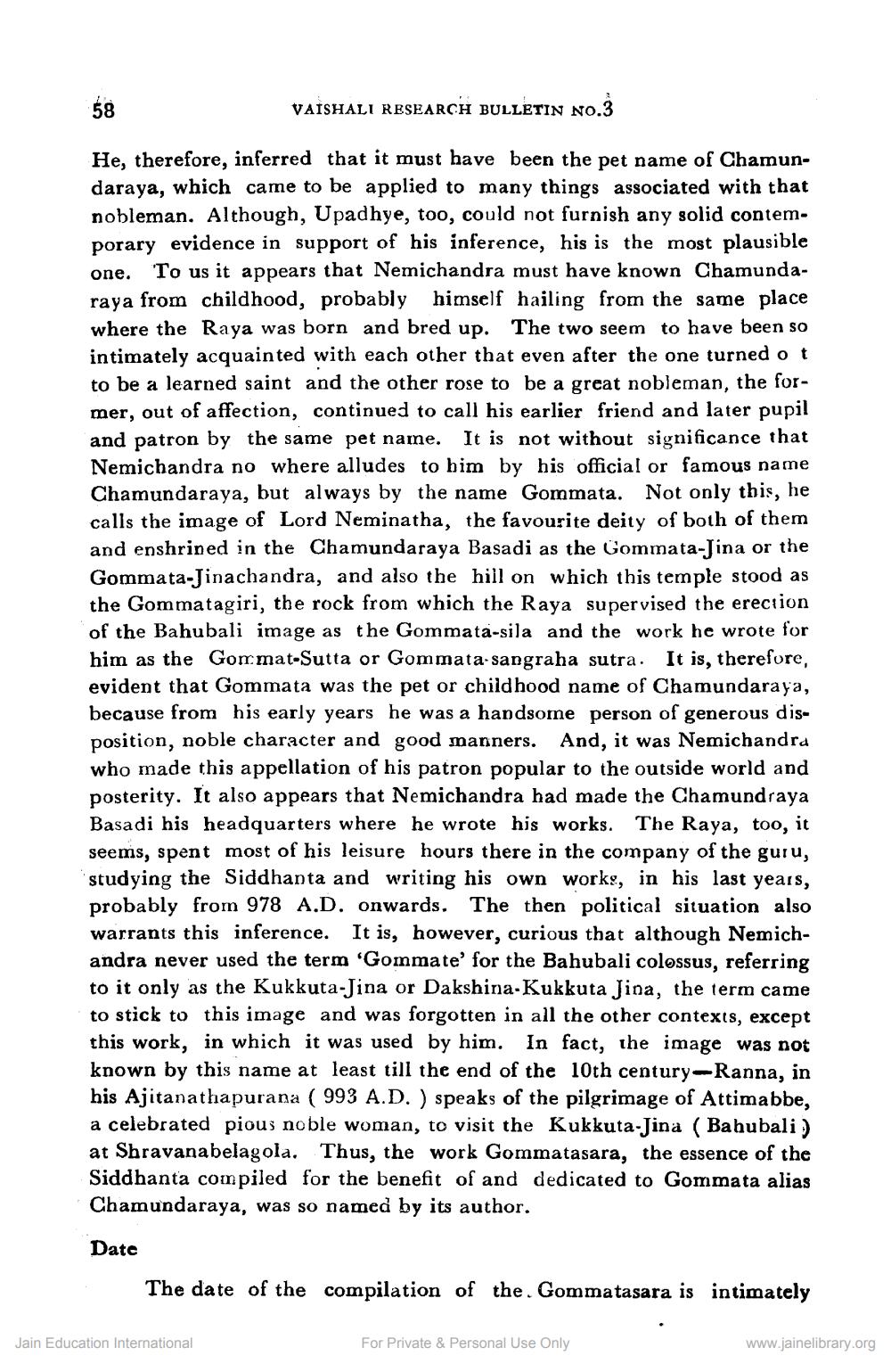________________
VAISHALI RESEARCH BULLETIN NO.3
He, therefore, inferred that it must have been the pet name of Chamundaraya, which came to be applied to many things associated with that nobleman. Although, Upadhye, too, could not furnish any solid contemporary evidence in support of his inference, his is the most plausible one. To us it appears that Nemichandra must have known Chamundaraya from childhood, probably himself hailing from the same place where the Raya was born and bred up. The two seem to have been so intimately acquainted with each other that even after the one turned o t to be a learned saint and the other rose to be a great nobleman, the former, out of affection, continued to call his earlier friend and later pupil and patron by the same pet name. It is not without significance that Nemichandra no where alludes to him by his official or famous name Chamundaraya, but always by the name Gommata. Not only this, he calls the image of Lord Neminatha, the favourite deity of both of them and enshrined in the Chamundaraya Basadi as the Gommata-Jina or the Gommata-Jinachandra, and also the hill on which this temple stood as the Gommatagiri, the rock from which the Raya supervised the erection of the Bahubali image as the Gommata-sila and the work he wrote for him as the Gommat-Sutta or Gommata sangraha sutra. It is, therefore, evident that Gommata was the pet or childhood name of Chamundaraya, because from his early years he was a handsome person of generous disposition, noble character and good manners. And, it was Nemichandra who made this appellation of his patron popular to the outside world and posterity. It also appears that Nemichandra had made the Chamundraya Basadi his headquarters where he wrote his works. The Raya, too, it seems, spent most of his leisure hours there in the company of the guru, studying the Siddhanta and writing his own works, in his last years, probably from 978 A.D. onwards. The then political situation also warrants this inference. It is, however, curious that although Nemichandra never used the term 'Gommate' for the Bahubali colossus, referring to it only as the Kukkuta-Jina or Dakshina-Kukkuta Jina, the term came to stick to this image and was forgotten in all the other contexts, except this work, in which it was used by him. In fact, the image was not known by this name at least till the end of the 10th century-Ranna, in his Ajitanathapurana ( 993 A.D. ) speaks of the pilgrimage of Attimabbe, a celebrated pious noble woman, to visit the Kukkuta-Jina (Bahubali ) at Shravanabelagola. Thus, the work Gommatasara, the essence of the Siddhanta compiled for the benefit of and dedicated to Gommata alias Chamundaraya, was so named by its author.
58
Date
The date of the compilation of the. Gommatasara is intimately
Jain Education International
For Private & Personal Use Only
www.jainelibrary.org




